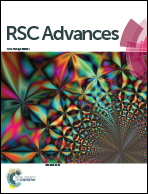Mechanism of sodium tripolyphosphate inhibiting the syneresis of HPAM hydrogel
Abstract
Experimental investigations have been conducted to elucidate the mechanism of sodium tripolyphosphate (STPP) inhibiting hydrogel syneresis with respect to the reaction between STPP and partly hydrolyzed polyacrylamide (HPAM). Viscosity measurements indicate that STPP can increase the viscosity of HPAM. The results of light scattering measurements show that STPP can improve the hydrophilicity of HPAM since both hydrodynamic radius (Rh) and second virial coefficient (A2) of HPAM are increased by STPP, and STPP can also increase the weight average molecular weight (Mw) of HPAM. FTIR and NMR measurements show that the mechanism of the above effect of STPP on HPAM is the following: STPP molecule can react with the C–O in the –COO− group of HPAM whereby the new bond of C–O–P is formed, so a large quantity of STPP molecules “adsorb” on the molecular chains of HPAM and produce the intramolecular or intermolecular crosslinking between HAPM and STPP. As a result, the increase of the hydrophilicity and stability of the crosslinked HPAM improve the water-holding capacity of the hydrogel, and then the hydrogel syneresis is decreased. On the basis of the crosslinking reaction between STPP and HPAM, a hydrogel, which can be successfully used at 160 °C, has been developed with HPAM and Cr3+ for the first time. Therefore, STPP is an effective syneresis inhibitor for the hydrogel formulated with HPAM, and it deserves to be popularization and applied in enhancing hydrogel stability.


 Please wait while we load your content...
Please wait while we load your content...